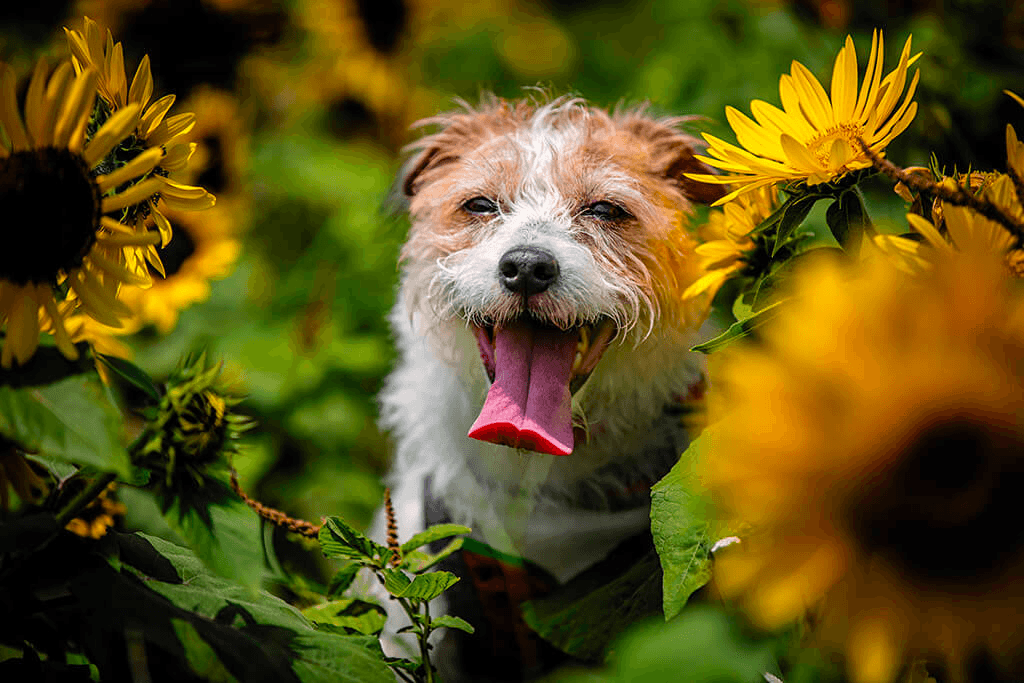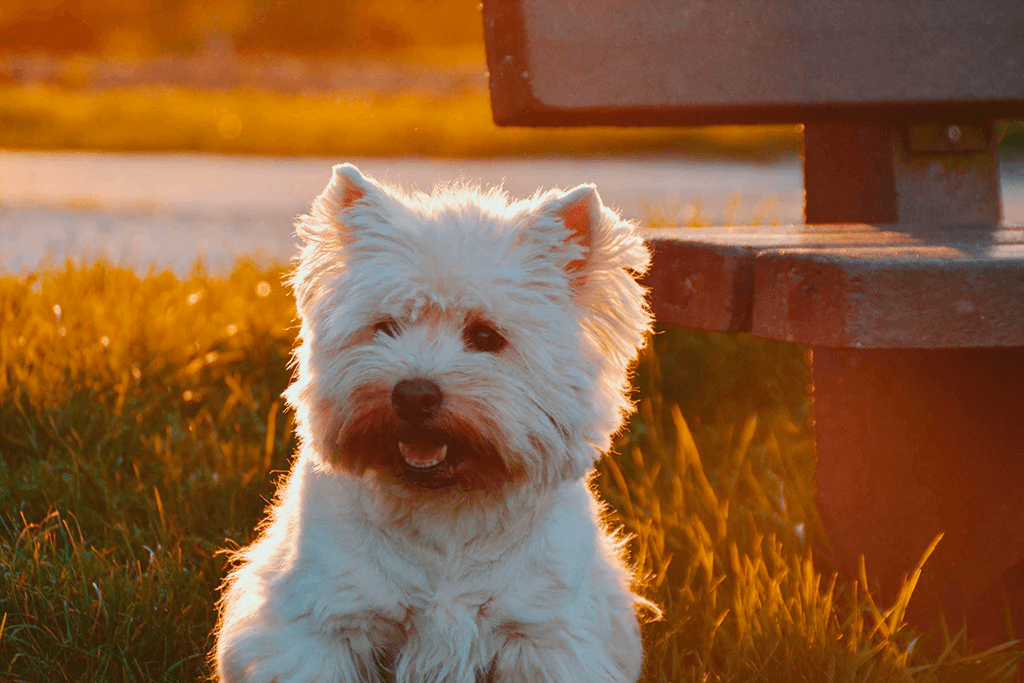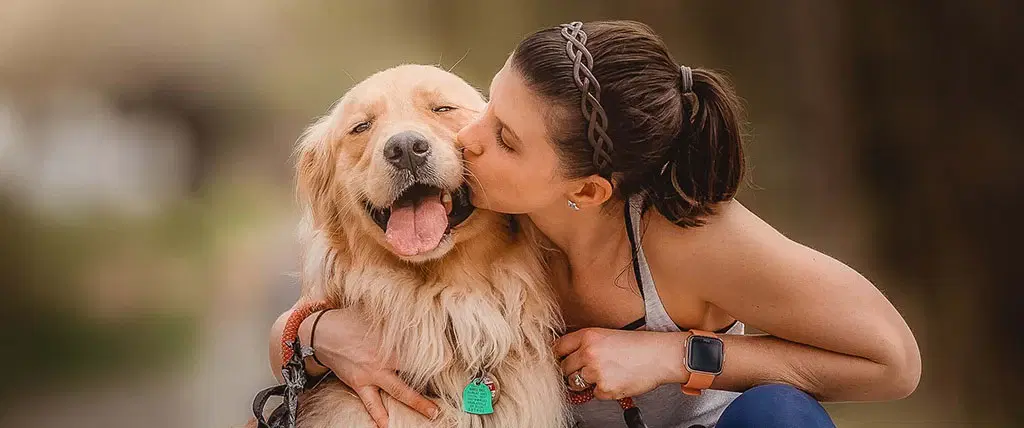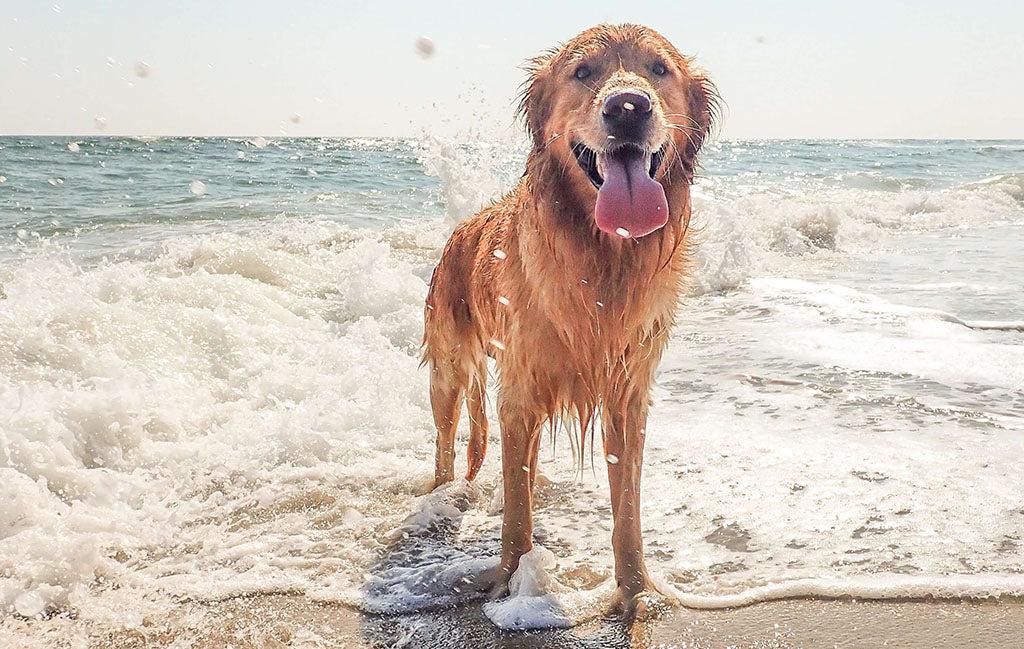Any facial swelling in dogs should be observed by a veterinarian. However, there are a variety of reasons for swelling on one side. Learn the causes.
- Home/
- Dog/
- Health & Wellness/
- Why Is My Dog’s Face Swollen on One Side? 10 Possible Causes
Why Is My Dog’s Face Swollen on One Side? 10 Possible Causes

Any time your dog’s face is swollen, it is cause for alarm. Instead of wondering, “Why is my dog’s face swollen on one side?” it’s best to take action to help your pup feel better. Whether from a bee sting, a mild bump on the head, or something more serious like an allergic reaction, identifying the cause is essential.
Most veterinarians report an allergic reaction as the most common cause of facial swelling in dogs. However, one-sided facial swelling may be from other underlying issues or health concerns.
In this article, we’ll explain the possible reasons for one-sided facial swelling in dogs, when it’s an emergency, how to prevent a swollen dog face, and what pet parents can do at home should this occur.
Full Face Swelling Vs. One-Sided Facial Swelling in Dogs
If you suspect your dog has a swollen face, observe it from different angles. Sometimes, it helps to snap a few close-up photos of your dog’s swollen face with your smartphone. Side by side, subtle differences and closer views are possible.
Full face swelling in dogs usually indicates something going on throughout their body. For example, a bacterial or viral infection may result in full facial swelling, especially if your dog’s lymph nodes are involved. Older dogs with full facial swelling may have heart or kidney issues, as fluid retention (edema) presents this way.
One-sided facial swelling in dogs tends to indicate a localized issue, such as an insect bite, dental concern, skin infection, benign or malignant growth, trauma, or injury (puncture wound, gum wound from chewing something hard, etc.)
Allergic reactions can cause both full facial swelling and one-sided facial swelling. While there are some similarities in the causes of full facial swelling and one-sided facial swelling, the presentation of each may help pet parents determine the problem.
10 Possible Reasons Your Dog’s Face Is Swollen on One Side
Some causes of one-sided facial swelling are more common than others. The potential causes of one-sided facial swelling in dogs include:
Allergic Reaction
Like people, one-sided facial swelling often results from bee stings, allergies, medication side effects, or insect bites. These allergic reactions can also cause swelling of the entire face, most notable around the eyes and muzzle.
Bug Bites or Stings
The face is a common place for dogs to get bitten or stung because they tend to explore the world with their muzzles. You may notice a swelling on one side of the face, accompanied by mild itching and redness. The dog may also paw at its face.
Tooth Abscesses
If your dog has a tooth abscess, one-sided facial swelling is common. Dogs may exhibit pain when trying to touch the area, or they may growl or snap. A wound may develop on the cheek over the abscess, and you may notice pus, a rancid odor, and redness.
“Tooth root abscesses and oral masses are the most common things I’ve seen in dogs with a swollen face,” says Dr. Sharon Daley of Heal House Call Vet in Wake Forest, North Carolina.
Skin Infection
Infection occurs for various reasons — from puncture wounds to scratches to bite wounds — and a foul-smelling discharge may accompany it. If your dog has an abscess or skin infection, this requires prompt veterinary attention so that it doesn’t spread or worsen.
Trauma or Injury
If your dog falls on the stairs, is in a fight, experiences trauma, or sustains injury to the face, head, or mouth, one-sided swelling is likely. Swelling under the eye area is also common due to trauma or injury, as well.
Oral Tumors or Growths
An oral tumor or growth is also a possible cause of one-sided facial swelling. Not all oral tumors or growths are malignant (cancerous), but a veterinarian is the only one who can rule this out through further testing.
Foreign Object
Dogs experience the world through their nose and mouth. Often, things dogs should not eat end up in their mouths anyway. This includes sticks, foxtails, and even household items. Dogs with swelling on one side of the face may have a foreign object lodged in their face or mouth.
Swollen Salivary Glands
A dog’s salivary glands perform in the same way as a human’s — they produce saliva for oral health and digestion. When salivary glands become infected or blocked, a dog may have facial swelling and/or develop a sialocele, which is a swelling of saliva that develops if the duct is blocked.
Facial Nerve Paralysis
The nerves in a dog’s face and head are responsible for sensation, pain, perception, reflexes, and facial movement. Facial nerve damage may cause muscle weakness. Sometimes a dog is unable to blink, they may drool, and one side of the face may appear droopy as if the dog had a stroke. This can cause the face to appear swollen on one side. However, keep in mind that some causes of true facial swelling, like trauma to the face, can also cause facial nerve paralysis.
Lymph Node Enlargement
Swollen lymph nodes from things like an immune response, cancer, or infection may cause a firm swelling in the face, jaw, and/or neck. There are lymph nodes just behind the jaw at the top of the neck which are common sites to notice lymph node swelling. Lymph node enlargement may be accompanied by fever and loss of appetite.
When Dog Facial Swelling Is an Emergency
Never second guess how your dog is feeling or what may have caused facial swelling. Dr. Daley hopes pet parents will act before things get serious.
“If your dog is painful or you see blood from the mouth, nose, or eye, or if your dog cannot eat or is lethargic, you should get him to a vet as soon as possible,” she shares.
For each of the above reasons, from an allergic reaction to facial nerve paralysis, it’s imperative to monitor your dog’s symptoms closely. What looks like slight swelling may be an emergency if accompanied by:
- Difficulty breathing
- Severe pain
- Loss of appetite/won’t drink
- Visible wounds, bite marks, bruising, etc.
- Foul-smelling breath
- Discharge or pus
- Bleeding gums
- Open wound
A severe allergic reaction is also an emergency because it can lead to anaphylaxis, a life-threatening condition. Just as someone with a peanut allergy should never touch or be around peanuts or peanut products, dogs may experience severe allergic reactions, too.
Rush your dog to an emergency veterinarian if there is vomiting, diarrhea, weakness, breathing issues, collapse, shock, hives, or any of the symptoms listed above.
Pro Tip: Be aware of the emergency veterinarians in your area and plug their phone number and addresses into your vehicle or phone’s GPS/saved contacts. When minutes matter, you’ll be prepared.
How Do Vets Treat One-Sided Facial Swelling in Dogs?
When Dr. Daley sees a dog with a swollen face, her first step is to observe. She looks for things like drooling, if the eyes are affected, if the mouth opens and closes, and if the one-sided swelling is accompanied by an odor.
“I would do a physical exam,” Dr. Daley reports. “I would do a good oral exam looking for broken/loose teeth, redness and swelling of the gums, oral masses, oral ulcers or sores, or foreign bodies like sticks in the mouth.”
She then closely examines the eyes, inside the ears, the face, and the lymph nodes/salivary glands, and she completes a cranial nerve exam.
Testing depends on the veterinarian’s findings and suspicions. Tests for one-sided facial swelling in dogs may include:
- Radiographs (may include sedated dental X-rays)
- Fine-needle aspiration
- Biopsy
- Blood tests
- Bacterial and fungal cultures
- Allergy testing (or referral to a veterinary dermatologist)
- Neurological examination
If needed, advanced testing such as a CT scan performed at a specialty center, may be recommended.
Depending on the cause, your veterinarian may prescribe antibiotics, pain medications like NSAIDs (nonsteroidal anti-inflammatory drugs), antihistamines, or perform surgery if necessary.
Tips for Preventing Dog Facial Swelling
Fortunately, there are many proactive measures pet parents can take at home to help prevent facial swelling in dogs. These include:
Ensuring Proper Dental Care
Dr. Daley says dental health is very important. “Getting your dog used to brushing or wiping teeth with an oral wipe can help prevent dental disease. Oral health routines can also alert owners to problems before they progress.” Try brushing your dog’s teeth a minimum of three times per week, and get their dental health evaluated by their veterinarian at annual wellness exams.
Supervising Dogs During Treat Time
Never give your dog a bone that is too hard, as this can lead to broken or fractured teeth. Supervise your dogs during treat time and remove any smaller pieces to avoid choking.
Removing Allergic Triggers
Allergies to common household triggers like dust mites, mold, or household chemicals may trigger one-sided facial swelling in dogs. Using an air purifier with a HEPA filter is something pet parents should consider.
Prevent Insect Bites and Stings
Use pet-safe insect repellents when dogs are outdoors. Keep curious dogs away from fire ant mounds, wasp nests, and heavy mosquito-infested areas. Use flea and tick protection when outdoors.
Protect Your Dog’s Eyes
Despite how cute it looks, never allow your dog to stick their head out of a moving vehicle. Not only does this put your dog at risk in an accident or sudden stop, but dirt and debris can affect their eyes, face, and mouth.
Establish a Baseline
Know what normal is on your dog’s head, face, and mouth (take a close-up photo) so that if something abnormal happens, you are ready to assess and react.
Schedule Regular Veterinary Checkups
Never skip veterinary checkups. Having regular bloodwork and hands-on examinations helps veterinarians catch problems before they become something major.
The Bottom Line
Whether your dog has one-sided or full facial swelling, it’s always a good idea to have your veterinarian check it out. A combination of dental care, allergen prevention, prompt injury care, and regular checkups can help.
If your dog has more serious symptoms like labored breathing, bleeding, or collapse, seek emergency veterinary treatment.

 C
C




